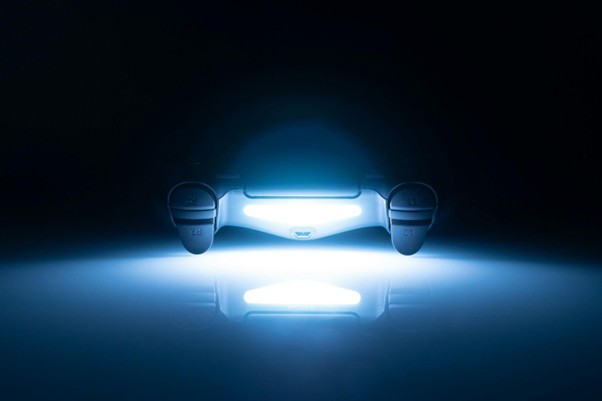Is the PlayStation 6 Handheld More Than Just a Glorified Mobile Gaming Device?

The prospect of a PlayStation 6 handheld has stirred plenty of conversation, with speculation pointing towards a portable machine that is not just mobile but also dockable, much like the Nintendo Switch. The idea of a PlayStation handheld is not new, yet every attempt in the past has struggled to break through against competing formats. Now, with technology offering stronger processing power, cross-platform compatibility, and an appetite for gaming on the move, the possibility of a PS6 handheld raises the question: Is it more than a glorified mobile device, or simply another portable console trying to fit into an already saturated market?
Portability Meets Interoperability
The excitement around a potential PS6 handheld lies in how it might balance portability with a level of performance that feels genuinely console-worthy. Rather than being limited to quick, bite-sized sessions, players would want something that mirrors the console experience while maintaining freedom of play.
This is where the similarities with other online platforms are helpful. For example, non gamstop casinos illustrate how online services allow players to access games across multiple devices without being tied down to a single format. These casinos cater to international audiences who want flexibility, whether logging in via a desktop, mobile, or tablet, while retaining the same account, wallet, and access to games. The appeal lies not only in mobility but also in interoperability, ensuring that users are not penalised for choosing one device over another.
A PlayStation 6 handheld would need to take this same approach. If it can operate seamlessly whether docked to a television or played on the go, while keeping accounts, saves, and services unified, it would show players that they are not just buying a secondary gadget but a genuine extension of the PlayStation ecosystem.
Docking as a Selling Point
Nintendo proved with the Switch that docking is a feature that can redefine a console’s identity. The Switch’s success came not just from its portability but from how easy it was to jump between handheld and television play. If Sony intends to deliver a dockable PS6 handheld, the feature must feel more than a clever scheme.
The rumoured docking ability will need to ensure minimal latency, fast transitions, and proper scaling of visuals. Nobody wants the portable version to look like a stripped-down cousin of its home console counterpart. If Sony can deliver parity, or at least a close match, it may carve out a new identity for the device. The dock itself could also serve as more than a charging station, potentially offering expanded hardware performance through additional processing power, similar to how external GPUs support laptops.
Learning From Past Mistakes
Sony’s track record with handhelds is mixed. The PlayStation Portable had its successes but faltered against the rise of mobile gaming. The PlayStation Vita, though loved by a loyal fanbase, failed commercially due to poor support and high pricing. What Sony cannot afford with the PS6 handheld is another underdeveloped attempt that is abandoned too soon.
One lesson to be taken seriously is software support. A handheld without strong first-party titles or third-party backing is doomed from the start. The Vita proved that hardware alone cannot carry a console, no matter how impressive its specifications might be.
The Cloud Factor
Cloud gaming has become an important part of the gaming conversation, with services like Xbox Cloud Gaming and Nvidia GeForce Now making it possible to stream high-quality titles without needing powerful hardware in hand. If Sony incorporates a strong cloud offering, the PS6 handheld could instantly gain broader appeal.
Rather than competing with smartphones purely on portability, Sony could make the handheld an entry point into a wider service ecosystem. Imagine starting a game on your PS6 at home, continuing it on the handheld during a commute, and then resuming later on your TV. This fluidity would be key in convincing players that the handheld is more than just another device.
Performance Expectations
The biggest challenge is meeting expectations. Gamers are no longer satisfied with watered-down experiences. If the PS6 handheld is marketed as a genuine console companion, it will need to deliver strong resolution, frame rates, and battery life. The Switch has often been criticised for limitations in visual quality and performance, something Sony will be expected to improve on.
Battery life will be a central concern. High-performance drains power quickly, and nobody wants to be tethered to a charger. The hardware design must find a balance between graphical power and efficiency, or risk frustrating the very audience it aims to attract.
Pricing Will Decide Its Fate
Pricing will determine whether the handheld thrives or struggles. If positioned too high, it risks alienating consumers who already see smartphones and tablets as sufficient for gaming. If priced competitively, it could draw in not only PlayStation loyalists but also casual players looking for a versatile option.
Sony’s strategy with the PlayStation 5 showed that different versions of hardware, such as digital-only and disc models, can succeed side by side. A similar approach with the handheld, one model focused on docking and another purely portable, could widen its appeal.
Is It Just Another Mobile Device?
The lingering doubt is whether the PS6 handheld will be viewed as a glorified mobile console. Smartphones already cover much of the casual gaming market. Tablets offer bigger screens. Cloud services are device-agnostic. So what would make Sony’s handheld different?
The answer lies in whether Sony treats it as part of a broader console ecosystem, rather than an isolated experiment. If the handheld works seamlessly with PS6 games, services, and accessories, while offering experiences smartphones cannot, it has a chance to stand on its own. If not, it risks repeating the mistakes of the Vita.
Conclusion
The rumours surrounding a PlayStation 6 handheld raise both excitement and scepticism. On one hand, the idea of a dockable, portable console capable of offering a genuine PlayStation experience on the go is compelling. On the other hand, history reminds us that without strong support and a clear purpose, handheld ventures can fade quickly.
For Sony, the challenge will be to make the device feel indispensable, not redundant. If it truly delivers console-quality play both at home and on the move, supported by strong services and fair pricing, then the PS6 handheld could be more than just a glorified mobile gaming device; it could be the next step in making gaming truly seamless.




